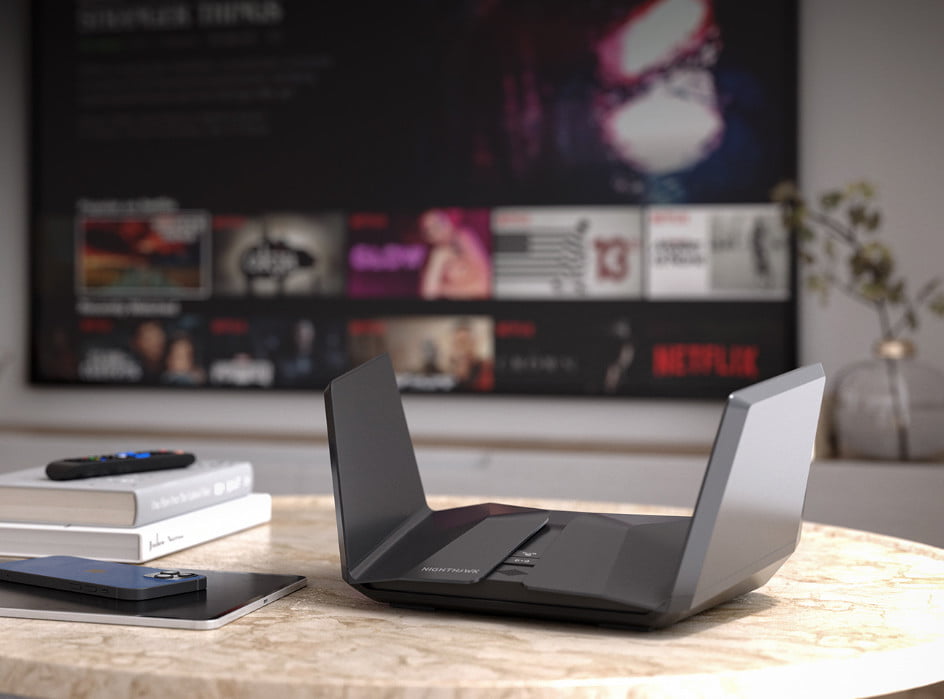Every year, damn near everyone in my family drives out to rural Oregon and piles into my mom’s house for the holidays. It’s ridiculous. Suddenly, the number of occupants in the house balloons from just two people to well over a dozen — and every year, mom’s Wi-Fi just can’t handle all the extra network traffic.
Or at least it couldn’t. Things are different this year. I got tired of dealing with glitchy video calls, dial-up-speed page loads, and Netflix movies that would pause to buffer every 15 seconds — so I made some small adjustments to her network setup. Thanks to those little tweaks, I’m proud to report that my mom’s snail-like rural broadband connection can now comfortably handle a house full of web users — and yours can, too.
Here’s a rundown of the four things I did, and how you can do them yourself to boost your internet at home.
Make your password simple to find and easy to remember
This tip isn’t really a network adjustment, but it’s arguably the easiest and most helpful thing you can do for your houseguests. Step one is to change your password to something that’s easy for normal humans to read and remember — not a string of random numbers and letters. Generally speaking, a good approach is to pick three or four medium-length words and string them together without spaces or dashes, like WatermelonProximityGrenade or RabidMonkeyDeathmatch.
Step two is to write this password down and make it simple to find. People are inevitably going to ask you for the password anyway, but if you write it down and place it somewhere that’s clearly visible (on sticky notes, chalkboards, or a note on the fridge, for example),then your guests can get all the info they need via self-service.
If you want to get extra fancy, you can also code your Wi-Fi login credentials to NFC tags and put them on your drink coasters, which allows your guests to log in just by tapping their phones in the right place.
Optimize your router placement
Your router beams Wi-Fi around your house in the form of radio waves, but radio waves don’t always travel through walls and floors particularly well. For example, if your router is in the basement, but your living room is on the main floor, you’re very likely getting worse internet speeds than you could if your router was placed more thoughtfully and strategically.
What constitutes “proper” router placement will vary depending on how your living space is configured, but arule of thumb is to pick a spot that’s close to your your most important internet-connected devices, as high off the ground as possible, and free of dense obstructions (like concrete or metal walls).
As an example, my mom used to have her router mounted in the coat closet to keep it hidden from view — but the closet was relatively far away, and the signal had to pass through multiple walls before it reached the living area, which was less than ideal. Moving it into the living room (where everyone watches movies and uses their phones) made a world of difference.
Make the most of your dual-band router
If you don’t have a dual-band router, feel free to skip this section — but if you do have one (which is highly likely if you purchased one within the past 5 to 7 years), then it’s definitely worth taking a moment to look critically at how you’ve got your network set up.
Basically, a dual-band router puts out two different wireless signals, one at the 2.4GHz frequency band and another on the 5GHz band. In order to avoid congestion on your network, it’s helpful to strategically decide which devices (and which people) are connected to which frequency. The key thing to keep in mind is that a 2.4GHz connection travels farther at lower speeds, while the 5GHz frequency provides faster speeds at shorter range.
With this in mind, it’s often a good idea to place any smart home devices — video doorbells, smart speakers, connected thermostats, etc. — on the 2.4GHz band, as these don’t generally benefit much from being on the faster 5GHz band. Keeping them on 2.4GHz ensures that your devices with higher speed requirements — TVs, guest smartphones, laptops, etc. — aren’t competing for bandwidth. Also, since 2.4GHz travels through obstructions better, it’s often a better choice for IoT devices anyway, as they’re often spread further throughout the house.
Set bandwidth priorities
To further avoid the possibility of network congestion, I also highly recommend that you set bandwidth priorities within your networks. Doing so will require you to dig into your router’s settings and make some adjustments, but it’s well worth the effort. By setting priorities, you can decide how much bandwidth is allocated to each device when there’s not enough bandwidth to accommodate every device.
Let’s say most of the family is sitting in the living room, streaming the new Matrix movie after dinner, but then the kids fire up some Fortnite in the basement, and Uncle Chester starts watching weird barbecue sauce review videos on YouTube. If your living room TV doesn’t have priority over the other devices in the house, and your internet service isn’t robust enough to handle all these things simultaneously, then your movie might start to freeze or cut out intermittently — and nobody wants a glitch in The Matrix.
These situations can often be avoided by setting bandwidth priorities and telling your router which devices are most important. The specific settings you’ll need to change will vary depending on your router model, but generally speaking, what you’re looking for is the Quality of Service settings. Here’s how to access those on most Netgear, TP-link, and Linksys routers.
